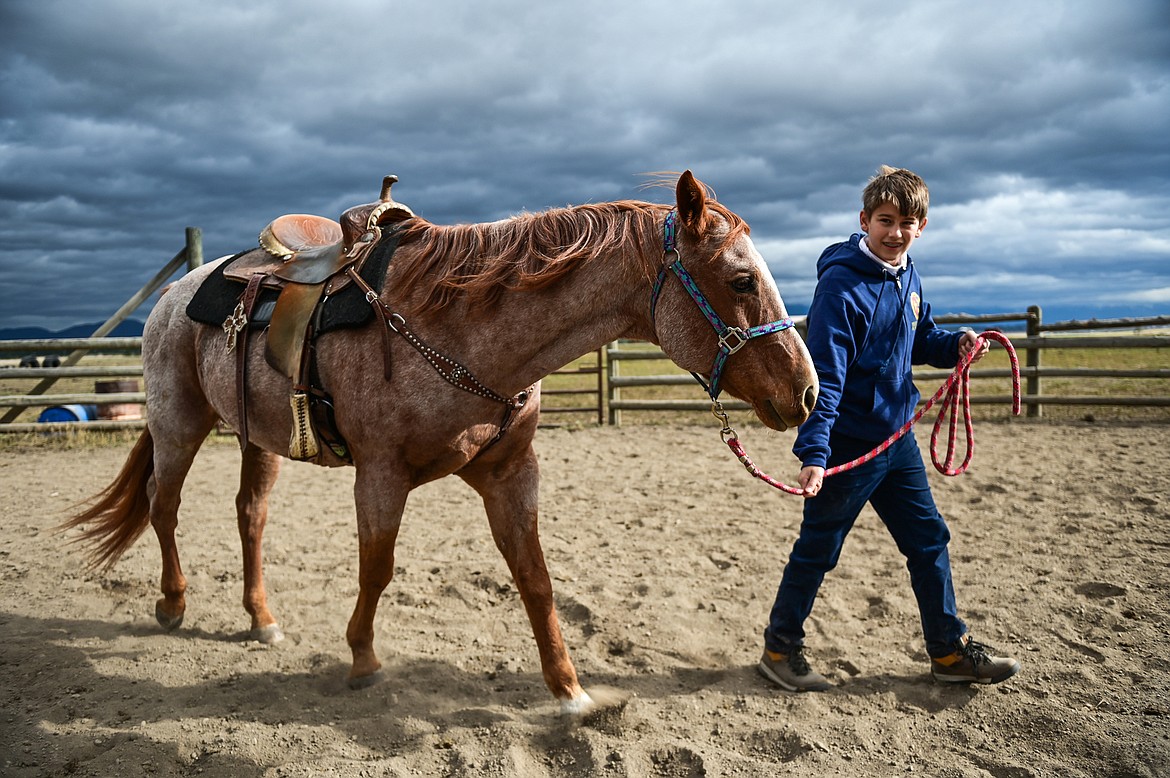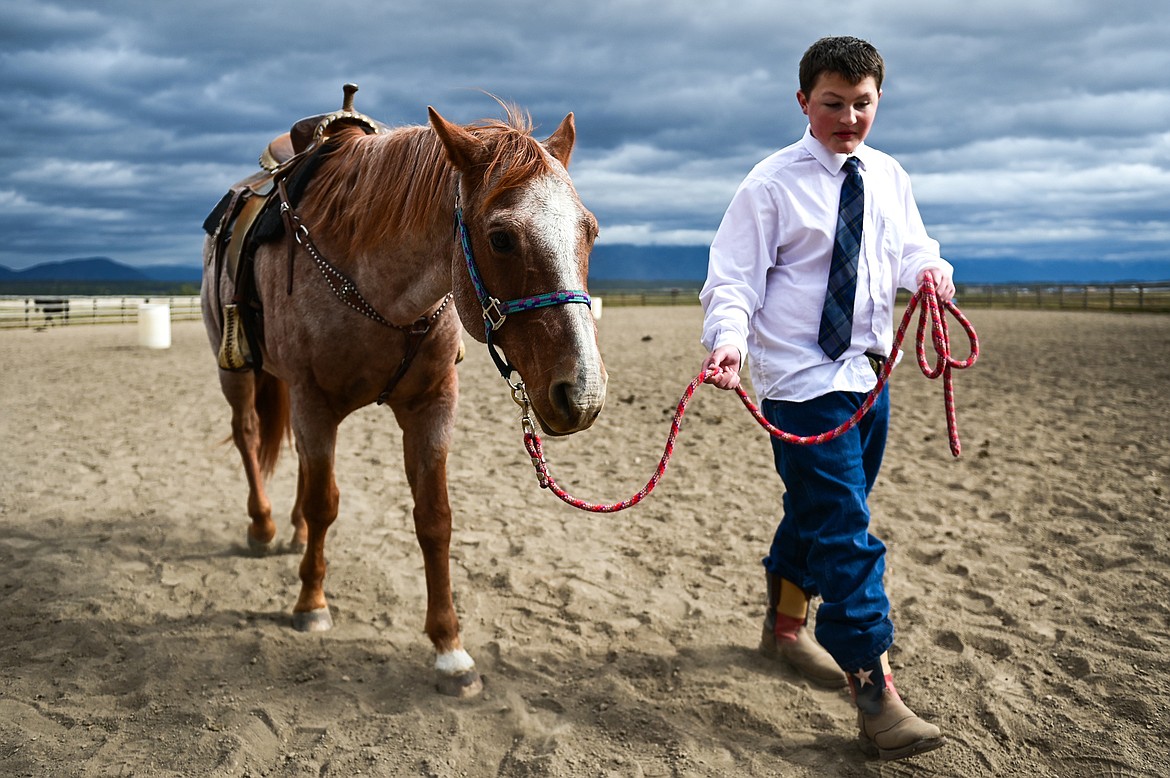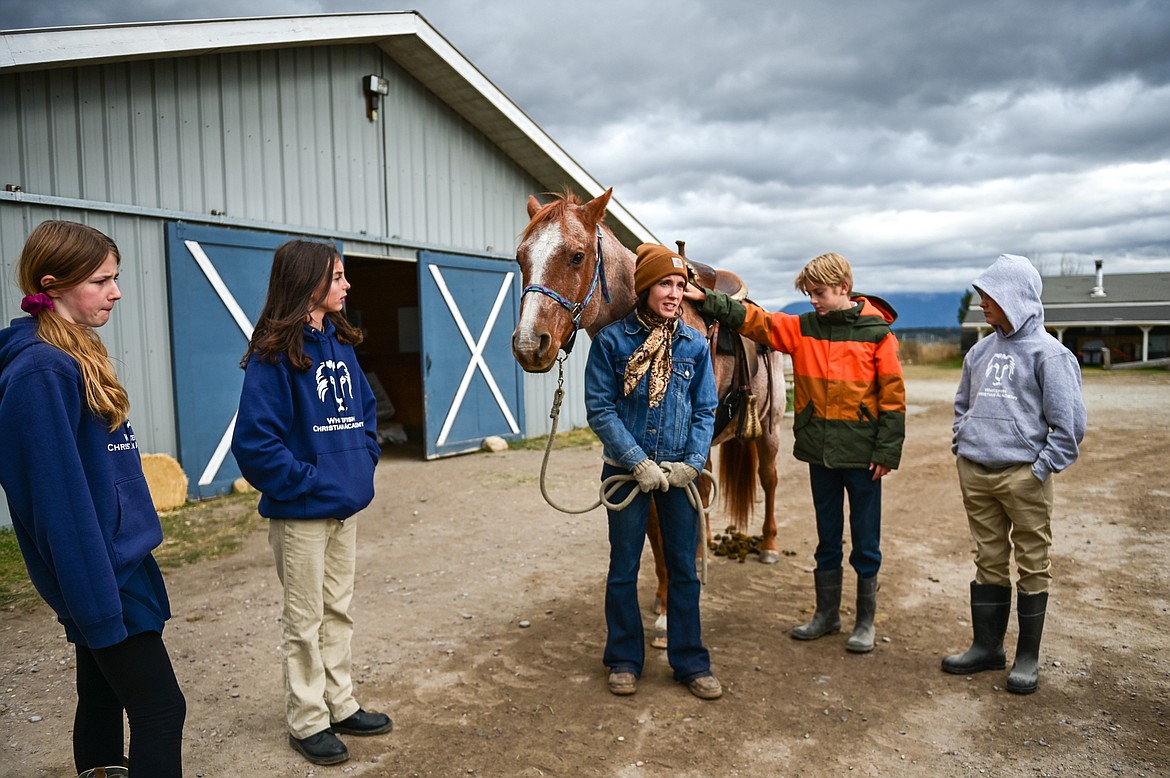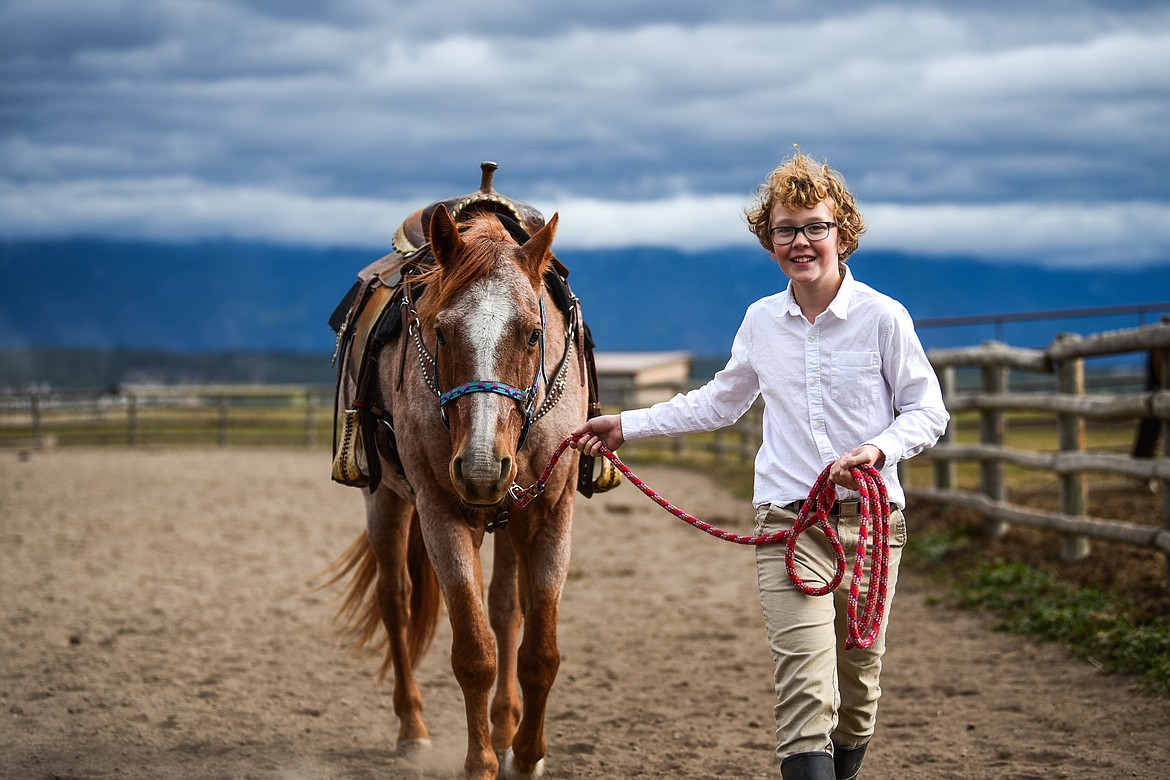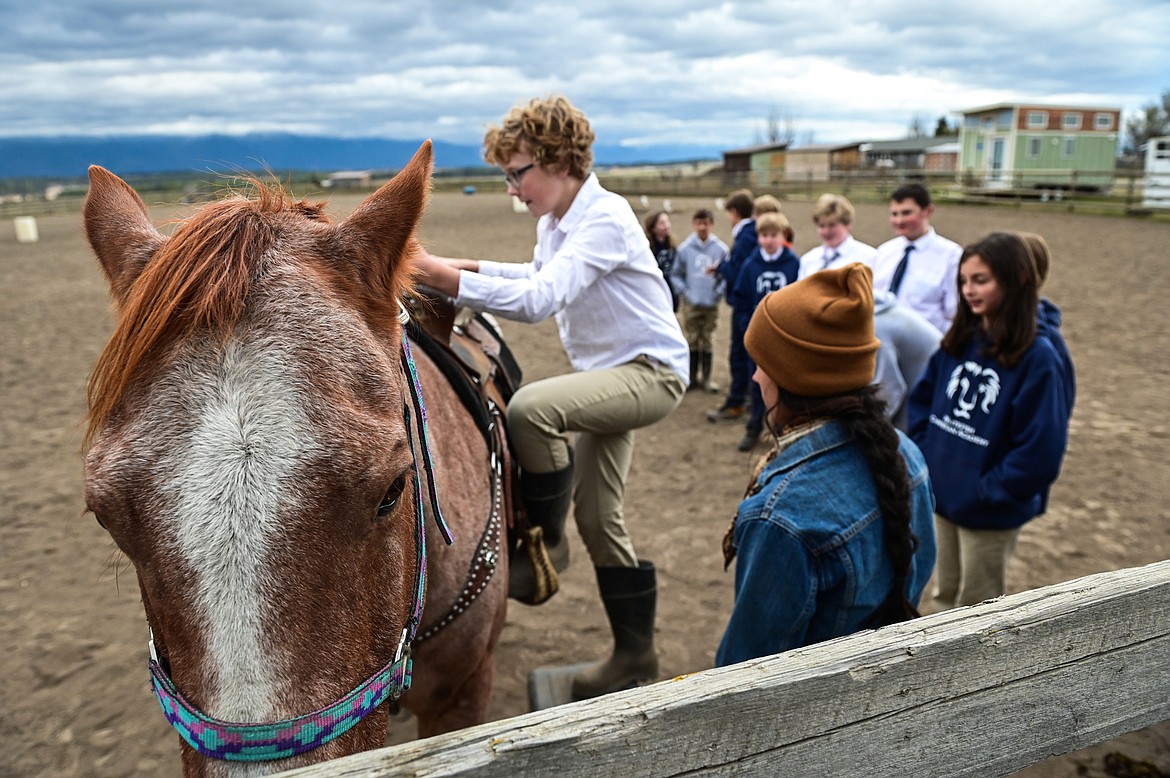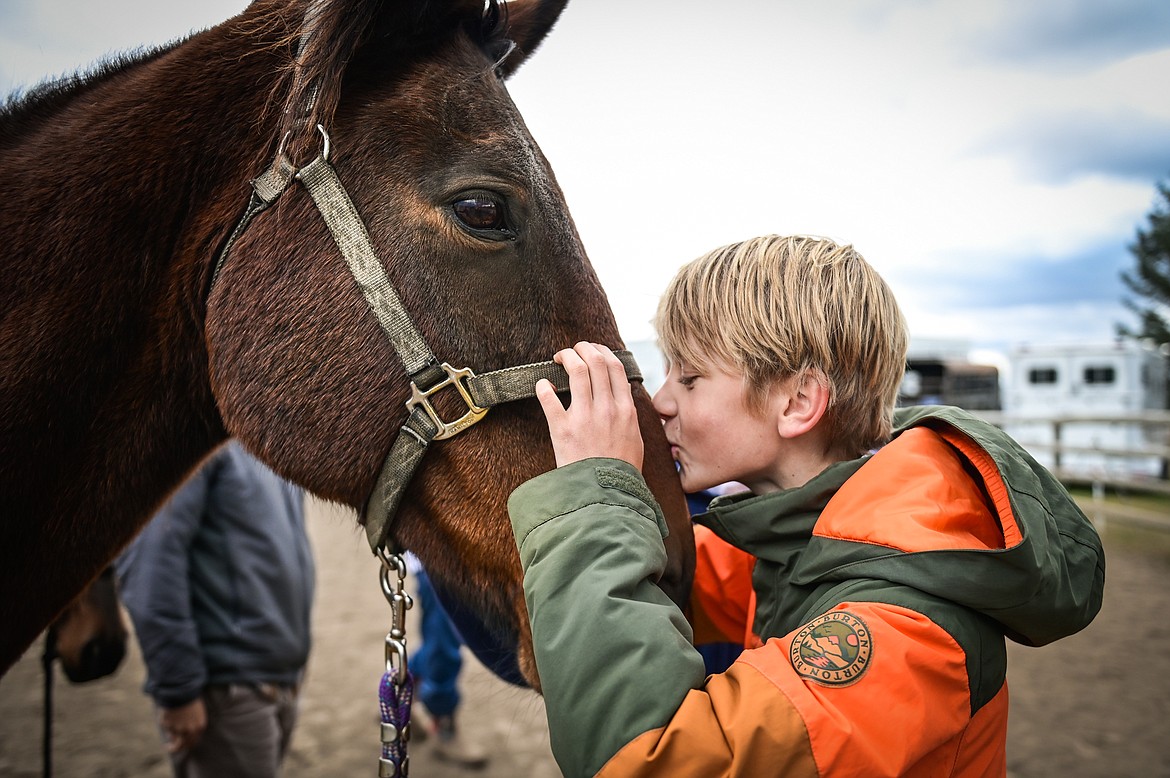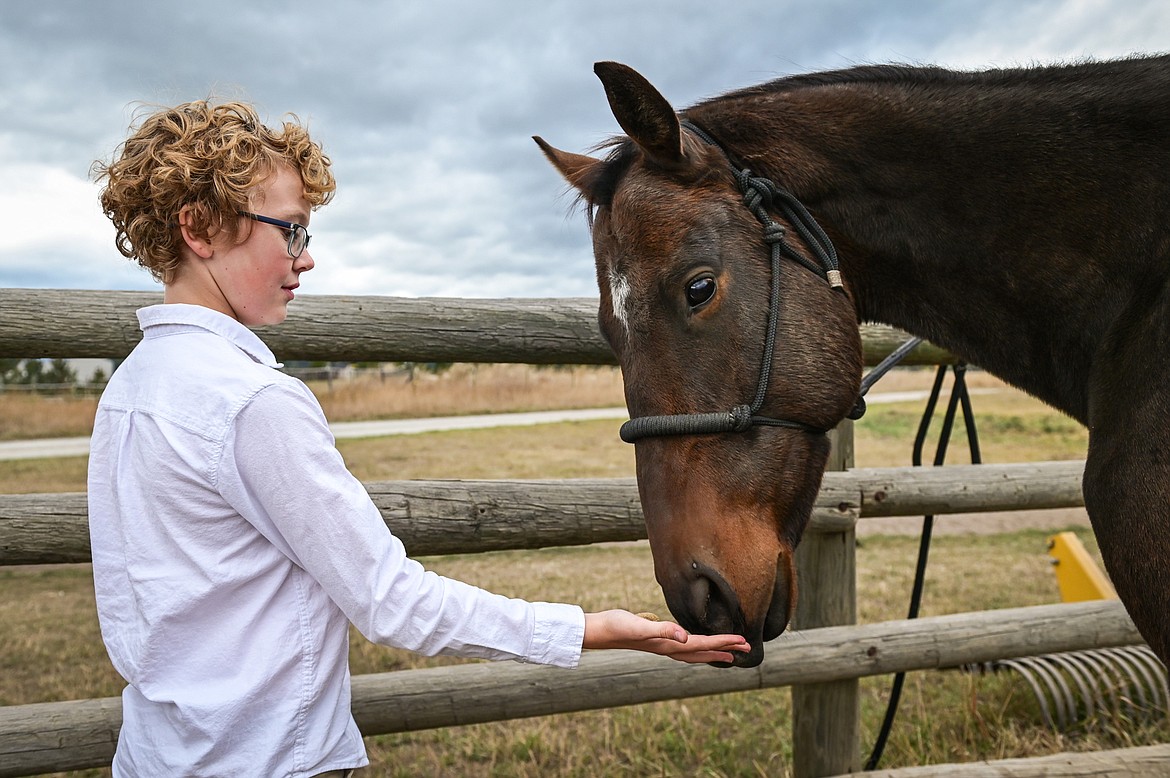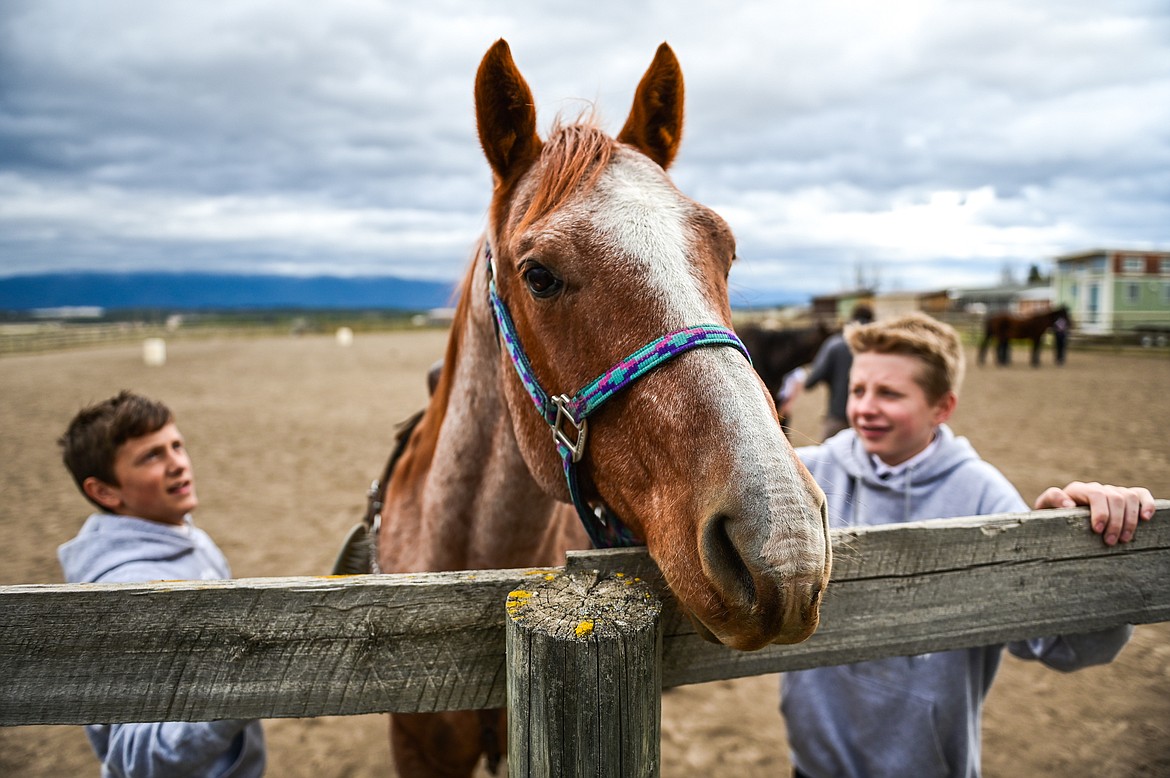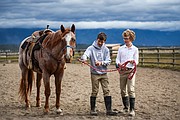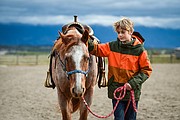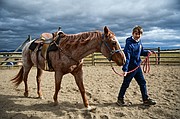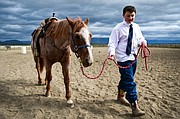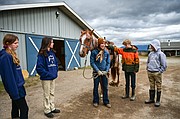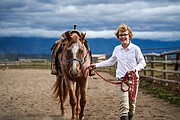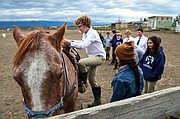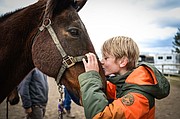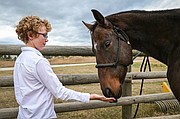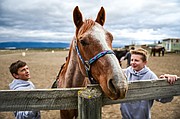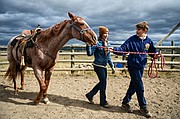Horse sense: Whitefish students take the reins in horsemanship class
HILARY MATHESON | Hagadone News Network | UPDATED 4 years, 2 months AGO
Filled with anticipation, Whitefish Christian Academy seventh-graders followed horsemanship instructor Chanel Olson and a horse named Hammer into an outdoor arena at Lost Creek Ranch in Kalispell on a recent Friday.
Closing the gate behind her, the group walked over to a group of horses busy nosing the ground and munching on what little grass they could reach below fencing.
The first lessons of the day included how to approach a horse, put on a halter, attach a lead rope and walk a horse around.
Olson first demonstrated how to approach a horse safely on the left side, not directly behind or in front of the horse, which are two blind spots. She said it’s also a good practice to talk to a horse as you approach.
“To me, a lot of our handling with horses is on their left side because it’s the thinking side of the brain and the right side is the reactive side of the brain,” Olson said. “It doesn’t mean we can’t do stuff with them on that [right] side, it’s just become standard practice, especially in riding programs, just general horsemanship.”
STUDENTS WERE out at the ranch as part of Whitefish Christian Academy’s new horsemanship program. Once a month for the remainder of the school year, sixth-, seventh- and eighth-graders will go to the ranch to learn and practice basic skills that go into handling and caring for a horse — not just riding. The program is an extension of the academy’s physical education program and nature studies, according to academy Director of Athletics Burton Gildersleeve.
“We call the program horsemanship, not horseback riding, because we want the program to be a well-rounded program,” Gildersleeve said.
“Good horsemanship involves not only skill and tact, but relationships also, and relationships require those virtues of patience, thoughtfulness and respect which the academy seeks to cultivate in all students,” he said.
That relationship encompasses laying the groundwork, which leads up to the riding lessons, according to Olson.
“That relationship with the horse starts on the ground because you have to go get your horse to ride. You have to groom them before you ride. You have to saddle them up. So everything happens on the ground — that relationship with them, the respect, the trust — it translates to in the saddle,” she said.
Gildersleeve said the new program is also an opportunity to get students involved in a pastime embedded in Montana culture.
“I’m not from Montana originally, but you come out to Montana and one of the richest parts of its history is the horsemanship aspect of it,” he said.
Olson, who has been an instructor since 2007, and works with ages 8 and up, said this is the first horsemanship program she’s aware of that is part of a middle school’s academics.
“I always say a lot of the days I feel like I’m not teaching the kids about horses or riding. It’s about life skills. Everything from responsibility, dedication, confidence — I see a lot of increased confidence just in their daily life as well. It’s empowering. I think that’s important, too, for kids working with these animals,” she said.
BACK IN the arena, Olson held out the lead rope, asking who wanted to walk a horse first. After several seconds student Adrian Raci stepped up tentatively taking the rope. Afterward, he said it was his first time working with horses.
“I was really nervous,” Raci said after passing the lead rope to someone else; however, his confidence level rose as he went on to help other classmates.
As other students tried walking around the arena, Olson continued encouraging them to take charge.
“Don’t be dainty with the ropes. They like when you are sure and confident,” she said.
“Where do you want us to go?” student Meghan Amick asked, turning her head back when she reached the fence on the other side of the arena.
Olson told her to pull the lead as she turned left, reminding all of the students who found themselves at a standstill to keep making clicking noises and keep moving so the horse also will continue to walk rather than stop.
Amick said she’s had lessons before and went on a recent horseback riding trip, but there is always more to learn and she was very excited to learn about the horsemanship class at school.
Soon, students’ hesitancy begins to fade and several of them begin walking horses in different directions at once, faint plumes of dust rising from the footfall of boots and hooves in the powdery dirt.
“Look, a 360,” student Jack Walz said, leading his horse in a circle.
Once reaching a level of comfortability, the lesson turned to grooming. Bringing out two buckets, Olson demonstrated using curry combs, body brushes and mane and tail brushes.
Grooming was a clear bonding moment for a few of the students who seemed to solidify their connection with a particular horse.
Finally, the last lesson of the day — possibly the scariest — was mounting and dismounting. The group seemed relieved when they realized they would have the aid of a mounting block to get on the horse. Alternatively, there were surprised looks when they learned it would be removed for the dismount.
For some, it was a difficult task, for others an easy one. Everyone, however, tried.
WITH HARD work came a reward. Lining up, Olson opened a bag of treats for the horses, dropping two into open palms.
“You guys need to take your hand and push it up to their mouth. They do not have fingers and they need to use their lips,” she said to quell any fear the horses would bite their hands. “A lot of the time it’s their lips you’re feeling. You would know if a horse bit you. You would take off screaming. Rarely does that happen.”
As for their favorite part of the students’ day?
“I liked walking the horse,” Amick said. “Walking the horse made me feel more confident.”
“Meeting Chief and feeding him,” Raci said.
Looking to future goals, Walz imagined where he’d be in his horsemanship journey at the end of the school year.
“I think I’ll eventually be able to ride into the sunset,” he said grinning, sweeping a raised arm across the sky.
Reporter Hilary Matheson may be reached at 406-758-4431 or by email at [email protected].
ARTICLES BY HILARY MATHESON

Christmas tradition: Business continues helping customers capture the holiday spirit
Snowline Acres owners Tom and Kristin Davis are approaching a decade of helping people celebrate the most wonderful time of the year.
Whitefish High School wins East Helena speech and debate tournament
Scoring 225 points, the Whitefish High School speech and debate team took first place at a weekend tournament.

Glacier High speech and debate team secures second in Bozeman
The Glacier High School speech and debate team secured second place, and Flathead High School, third in Bozeman.





